Waist packs
By Barry Kauler
Page updated: January 25, 2016
This is one page of a series that I am writing on "traveling
light", whether it be hiking in the wilderness or wandering the
world by boat, bus, train or air.
Over the years, I have done a bit of hiking, or what some would call trekking, rambling, or bushwalking.
January 2015, mid-summer here in Western Australia, I walked a short section of the Bibbulmun Track. I attempted to travel light, but my backpack, loaded with sleeping bag, tent, folding chair, inflatable mattress, food, clothes, toiletries and miscellaneous other items, was a strain.
I'm not a spring chicken anymore. Age 66, my back has a degenerated lower vertebrae, which got stressed a bit carrying the backpack (as did my poor feet!), but trying to crawl around inside my tent was the worst part.
Anyway, moving ahead to the present. I decided to rethink the whole thing. Yes, I did think that I was on the "ultra light" side back in January 2015, however I have now taken it to the extreme.
Although a well-designed backpack is not supposed to pull much on the shoulders, I have yet to find one that doesn't. Also, I carefully observe anyone carrying a backpack, and always I notice considerable downward pull on their shoulders.
To totally eliminate stress on my back, I investigated ultra-ultra-light hiking with only a waist pack. These are also known as lumbar packs, waist bags or bum bags.
What's out there?
The challenge, I soon discovered, was to find a waist pack large enough. I set a minimum size of 6 litres, and this table shows what I found. I know, I know, 6 litres is pitiful, but bear with me.
| Lowe Alpine Space
Case |
This cost me AU$49.95 including postage. I bought it from here:
http://www.bushcraftequipment.com.au/store/products.php?product=Lowe-Alpine-Space-Case#
Specs:
Weight: 0.29kg |
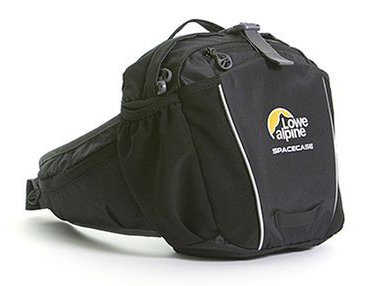 |
After arrival, I found the main compartment held about 4 litres. Actual weight: 295gm.
| Sierra XL bum bag |
This was on sale at only AU$19.99 including postage, from these guys: http://www.velogear.com.au/bicycle-accessories/bum-waist-bags/sierra-xl-bum-bag-2-colours.html
Specs:
|
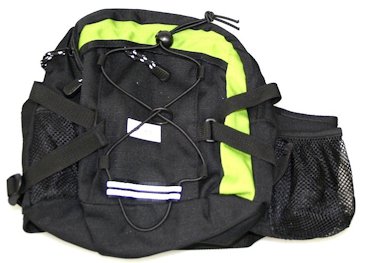 |
After arrival, a rough measurement is 4 litre capacity for the main compartment. Actual weight is 297gm.
| Mountainsmith
Daylight Lumbar Pack |
This cost me AU$95.10 plus AU$40 international postage:
http://www.ebags.com/product/mountainsmith/daylight-lumbar-pack/208541?productid=10121064
Specs:
|
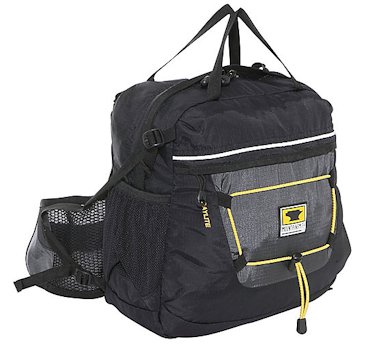 |
Note, after buying it, I came across cheaper suppliers: fishpond amazon
The first two are inexpensive, from Australian suppliers. I
didn't want to spend much more, however, I got enticed by the
Mountainsmith pack. Mostly because of the larger size, yet still
light. Note, actual weight is 408gm.
Besides, as I had decided to write up a comparative review of the
larger bum bags, thats this page, it was appropriate to buy at
least three bags. The ones that I end up not wanting, I will give
away.
Comparing the bags
This page does not have full-blown hiking expedition tests -- that comes elsewhere. Instead, I have given impressions of the bags, such as quality, comfort, how much can be put in them, and rough ideas about usage -- such as day-hike, hike-overnight-in-shelter, or airline carry-on.
The most important question, that I hope to answer in this
review, is that of stability. Apparently, there is a
reason that waist bags are not made very large. A backpack has a
frame, which keeps the load in-place, however, a waist-pack sticks
out from the back, only anchored by the belt, so is going to
"bounce" when walking.
I am hoping to identify whether the largest pack, the
Mountainsmith Daylight, bounces too much, or whether careful
packing can make it OK.
| What is "too big"? Mountainsmith make an even bigger pack, the Day TLS, with capacity of 14 litres (854 cu.in). Fully-laden though, it is recommended to use shoulder straps for stability, which defeats the whole concept, might as well use a conventional backpack. |
 |
| 1: Lowe Alpine
Space Case |
I ordered this bag online, thinking that it has 7 litres capacity, however, that is very misleading. The main compartment holds about 4 litres.
Obviously, this pack is not for multi-day hikes! Yet, it is
surprising what I was able to stuff into it:
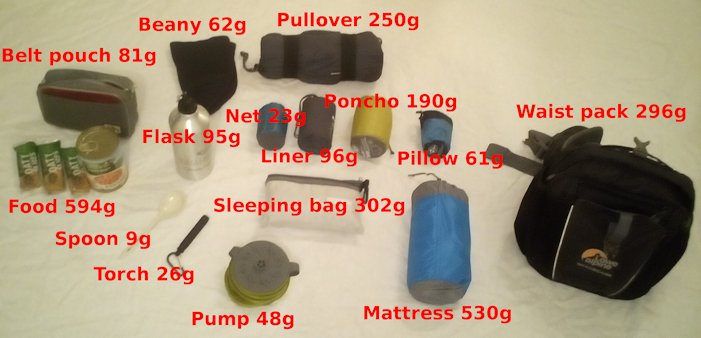
Note, all of the above items are desribed in depth, with links to
where I purchased them, and prices, in my Base
Load web page.
| This is enough gear for an
overnighter in a shelter. I even included my mattress! The pullover is strapped on the top of the bag, 700ml flask in one of the mesh pockets. No room for food, so I wore a belt pouch at the front. Weight, without food and water, 2.1 kg. |
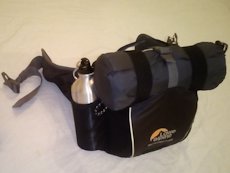 |
| That sleeping bag is a tiny
summer bag. Matress and pillow are a necessity for me, with my bad back, but a luxury for others. Sleeping bag liner, well not really essential either. The poncho has an extra use, it can be used as a tarp, to protect the mattress. |
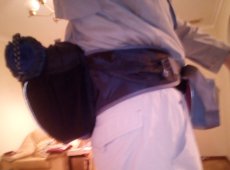 |
Very easy to carry, did not bounce or settle down too much as I
walked. A pleasant experience. Excellent quality construction.
Of course, without mattress and pillow, there would be room for
food in the pack.
| 2: Sierra XL bum bag |
The capacity is pretty much the same as the Space Case pack, and I was able to pack all the same items.
| One difference though, is I
had to attach the pullover on the back, so it sticks out
more. Also, the mesh pouches are too small for my 700ml flask, so I would have to obtain two smaller bottles. There are less pockets, so not quite so convenient. |
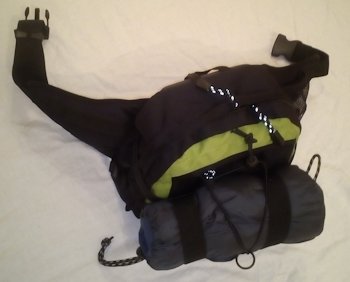 |
Good quality construction. The feel of it is good, was able to walk around without undue bounce or sag. The hip belt is not quite so well padded, so along with the small mesh pouches and less pockets, the Space Case wins.
| 2: Mountainsmith
Daylight Lumbar Pack |
Ah, now for the big guy. Fully loaded with the claimed 11.5
litres capacity, will it bounce or sag too much? This is what I
put into it:
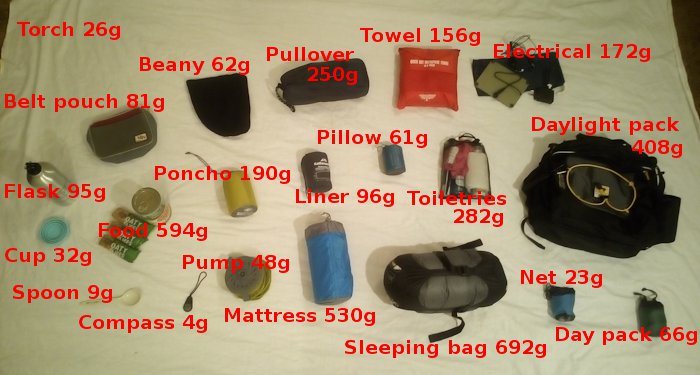
Yes, I even packed my Sea to Summit Micro II sleeping bag, which is rated at 2 degrees Celsius. In addition, a toiletries bag, towel and electrical kit.
| The sleeping bag took up a
lot of room, so I still had to put the pullover on top, and
food into the belt-pouch mounted at my front. The mesh pouches are big enough for my 700ml flask, a plus point. The total weight, without food and water (including the belt pouch and flask) is 3.3kg. |
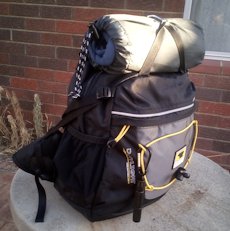 |
| Thanks to dual tensioning
straps on the sides, I was able to pull the pack snuggly
into the curve of my back, and I think it is this feature
that makes it easier to carry the extra weight. Note, I look a bit contorted in that photo -- that is because I took it myself, holding my phone as far out as possible. Quality construction. |
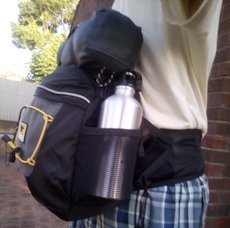 |
I walked around, and felt quite comfortable carrying this pack, however, it remains to be seen if the comfort persists on a long hike!
| One thing I find quite
incredible, is that the Daylight pack packs into its own
internal stuff-sack. That tiny sack shown on the right. There are some very interesting youtube videos of this pack:
|
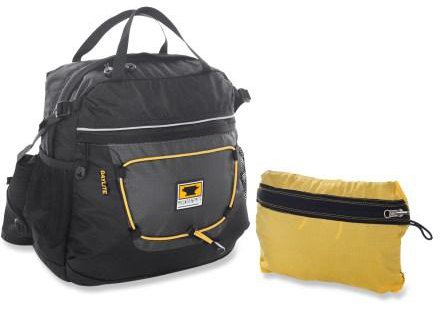 |
Conclusions
Some tentative conclusions can be made. The smaller packs are OK
for day-hikes, and can even stretch to an overnight in warm summer
conditions, sleeping in a shelter.
Note, the kind of shelter I have in mind is on my favourite walk,
the Bibbulmun Track, which starts close to where I live, is over
1000km long, and has 3-sided huts every 15km or so. Anyway, more
details on that in the field tests.
The Daylight pack is tantalizingly close to being multi-day hike
capable. It could be pushed into this role, if some sacrifices are
made. Such as a tiny summer sleeping bag (more on that in the
field tests), sleeping in shelters (or under the stars in dry
weather). I think that I could par the weight down to under 3kg,
without food and water.
My feeling is that 4 kg would be about the upper limit for a waist pack, limiting how much food and water can be added. However, the tiny Sea to Summit daypack weighs just 66gm (see items photo, right-bottom), and becomes a 20 litre backpack -- which could be used to carry extra food.
I do have some ideas that I want to explore, regarding the Daylight pack and multi-day hikes. Again, will elaborate on that in upcoming field tests.Fields tests
The proof of the pudding is in the eating. I need to get out there,
to find out how these packs really perform.(c) Copyright Barry Kauler 2016, all rights reserved.
Please do not copy this page anywhere, instead link to it. I will probably be editing it every now and again, so it is wise to link to this original page.
Tags: light
